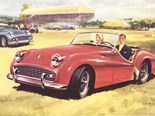Market Watch: Affordable Aussie Muscle
The Holy Grails of Australian automotive performance come in various shapes and from different eras
Look back 50 years to find triple-Weber Chargers, the XU-1 Torana and evocative GTHO Falcons.
Move into the 1980s and Holden became dominant via HDT’s ‘Blue Meanie’ VK and the ‘Walkinshaw’ VL. Both, not long ago, would sell in exceptional condition for more than $300,000.
Our current century has seen a rash Contrived Collectibles – models deliberately limited in their availability to extract that final atom of collector interest from brands about to vanish.
Some, like the fabled W1 Maloo GTS-R (four made) and the Monaro HRT427 (just two of those ever built) will likely remain unaffordable, but below them the wondrous W427 sedan can still be found at $250,000.
High-profile collector cars have proven during the past 40 years to be rewarding and sustainable investments, but they do suffer peaks and troughs in a volatile market.
Enjoying locally produced excitement without risking all of your home equity is still possible though, and cars carrying lower levels of risk remain interesting.
All of our chosen five come from times which saw the local market suffering economic pressures, when even performance models were being built with pricing very much in mind.
Two are from Holden and its HSV offshoot, two from Ford and the associated Ford Performance Vehicles. We would love to have included the extraordinary 5.6-litre Tickford TE50 but finding just one for sale from a reported 202 built proved impossible.
In there to finish the Five is Toyota’s first and only attempt at an Aussie-built sports sedan; the ferocious TRD Aurion.
None of our selections should cost much above $50,000 and most will be significantly cheaper. All deliver energetic performance, with even the two-door doing it in a reasonably practical way.
HSV CLUBSPORT VR-VT
$24-40K
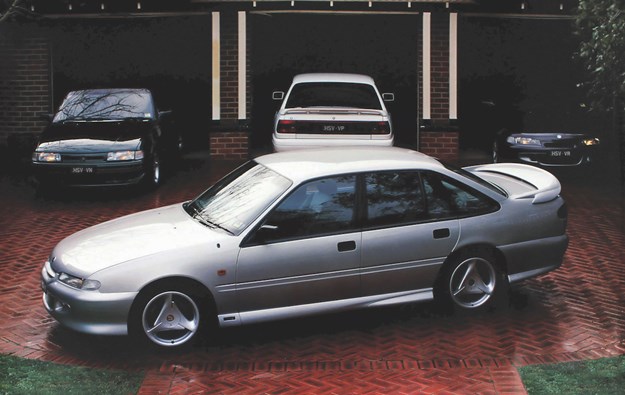
Image: HSV
Clubsport is the model that saved HSV from oblivion. Launched 18 months before Australia’s second-worst recession, Holden Special Vehicles was in perilous waters by 1990 when the VN version arrived.
It was described by one magazine as back to basics, but still cost almost $35,000. What it did for HSV though was create a client base that would keep coming back at each model change for the newest version and put more cars into the used market.
By 1993, when Holden mildly reshaped its VR Commodore, life had become a little easier for HSV. A Clubsport by then would cost $45,000, yet during 24 months of production 1117 VR Clubbies were sold.
Three years later, the VT Clubsport arrived and despite being priced $10,000 above the VR, sales of HSV’s final 5.0-litre climbed past 1600. That total included 174 cars produced to commemorate HSV’s 10th Anniversary.
Later cars are in general cheaper, with VRs often beset by overpricing. Low-kilometre VS or VTs still have a collectible future and offer more car for your money.
HOLDEN V2 MONARO CV8-R
$42-55K
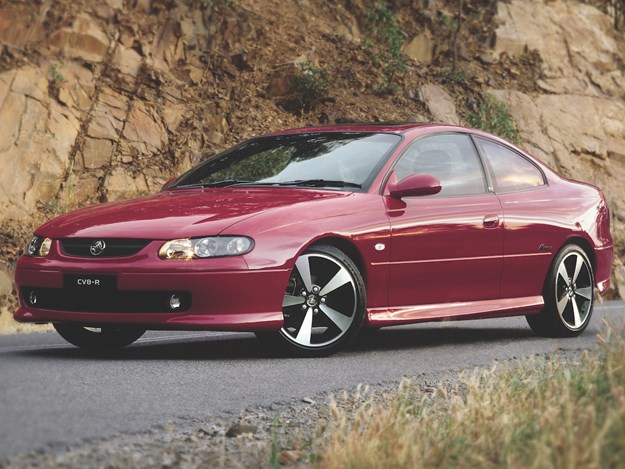
Image: Holden
Holden during 2001 sought to revive its iconic Monaro nameplate, but with a body that oozed disappointment.
In original HK form, the Monaro was shaped around a broad expanse of lateral glass and the perfect pillarless profile.
In V2 form, thanks to a need to meet safety standards, the Monaro was dominated by big hips and a central pillar that left it looking way too much like the SS sedan.
The Monaro’s bacon was meant to be saved by model sharing with Pontiac in the USA and Vauxhall in Britain, but those economies of scale evaporated and with them, any hope of a VE-based version.
More than 14,000 Holden and HSV badged Coupes were produced and from the surviving population we have chosen the CV8-R. Only 320 of these Series III cars were reportedly built.
Vendors who pitched their cars at untenable prices are bringing them back to reality and sparking buyer interest at around $50,000. Don’t procrastinate though, because these are desirable cars and lower prices may not hang around for long.
TRD AURION 3500SL
$9-20K
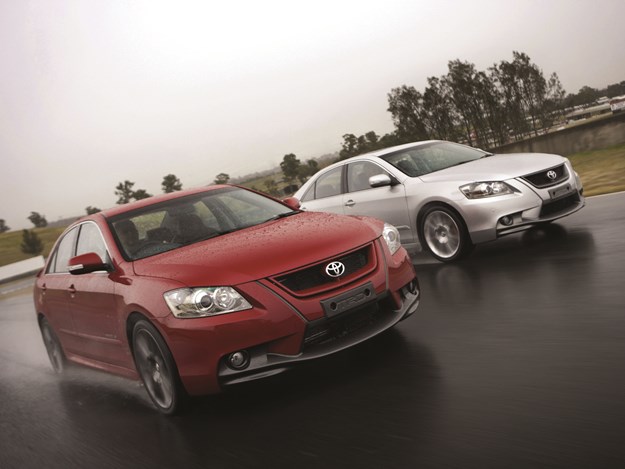
Image: Toyota
Toyota was a long time waiting for its shot at the local performance car market and as soon as it did, the market turned sour.
The TRD Aurion is an exciting drive, but caution is required with 241kW from its supercharged 3.5-litre engine funnelled through a pair of overworked front tyres. There were electronic aids intended to stop the driver’s arms being ripped, Auntie Jack style, from their sockets, but they could only do so much.
Once grip was established, the TRD Aurion would match acceleration times with all but the gruntiest of local V8s. Zero to 100km/h occupied just 6.1 seconds and 0-400 metres took 14.2.
Despite its potential for rapid travel, TRD’s Aurion remains viable as everyday transport. Comfortable and with the features expected from a mid-range prestige model.
Cars currently available show leather trim that is still in good shape, with paint and body plastics holding up as well.
The used market hasn’t been kind to TRD though, and that’s good news for those wanting an Aurion. Cars showing highish kilometres cost less than $10,000, while those at 120K or less sell for around $20,000.
FORD FG XR6 TURBO
$15-28K
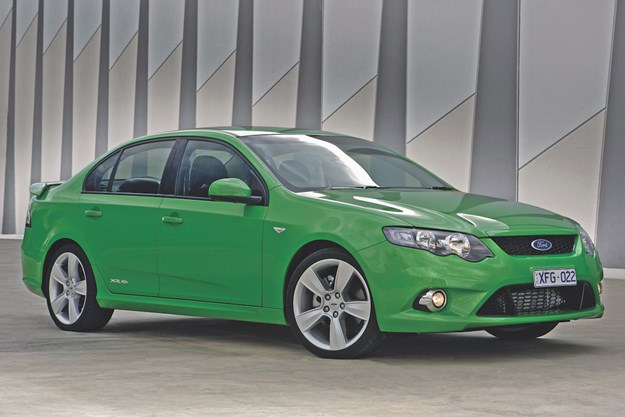
Image: Ford
Back in the 1980s, private performance organisations including Dick Johnson Racing in Queensland, had a shot at producing six-cylinder turbocharged Falcons to fill the void when Ford Australia abandoned V8 power.
Their efforts were largely ignored by a market that didn’t like Aussie-badged turbos and the shelf remained empty until Ford in 2003 built its own turbo-six Falcon.
New in 2008, an FG version of the XR6T with manual transmission and Brembo brake upgrade cost around $48,000 plus on-roads. Performance included 0-100km/h in 5.2 seconds from a car with six-speed automatic and an even more impressive 80-120km/h time of 3.1 seconds. That was 0.7 faster than the more powerful XR8.
Adding 15 years and 200,000km to an XR6T can bring faded cabin plastics and paint starting to delaminate, but those factors don’t affect performance. They just make a car with cosmetic issues more affordable than one that hasn’t as yet become prey to sun damage.
Turbo manuals had an appetite for clutches, so the six-speed automatic with its snappy sports shift will likely cost less in maintenance and is as quick.
FPV BA GT-P
$27-45K
.jpg)
Image: Ford
After a seven-year absence, the Falcon GT reappeared in 2003 as part of the Ford Performance Vehicles range.
Having famously trumpeted in 1975 that its XB would be the final Aussie-build GT, Ford shamelessly turned to building ‘commemorative’ models before returning the badge to its regular line-up.
BA GTs sold well, with production data showing 1306 basic BA GTs built, plus 1103 of the GT-P with Fairmont-level trim and extras like dual-zone air-conditioning.
The imported, fuel-injected 5.4-litre V8 produced 290kW, with five-speed manual or four-speed automatic transmission. Although these engines deliver similar power to a GTHO Phase 3, the BA-based GT feels nothing like its rampaging, race-bred ancestor.
FPV GTs handle and stop with utter civility, yet still manage to rattle suburban windows when the V8 reaches its redline. They also cost much less than an excellent XY.
When new, the Fairmont trimmed GT-P was $9000 more expensive than a standard BA GT. However, that gap narrows in a used market where distance travelled has become more significant than features when setting a selling price.
Unique Cars magazine Value Guides
Sell your car for free right here
Get your monthly fix of news, reviews and stories on the greatest cars and minds in the automotive world.
Subscribe

.jpg)








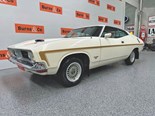
.png)
